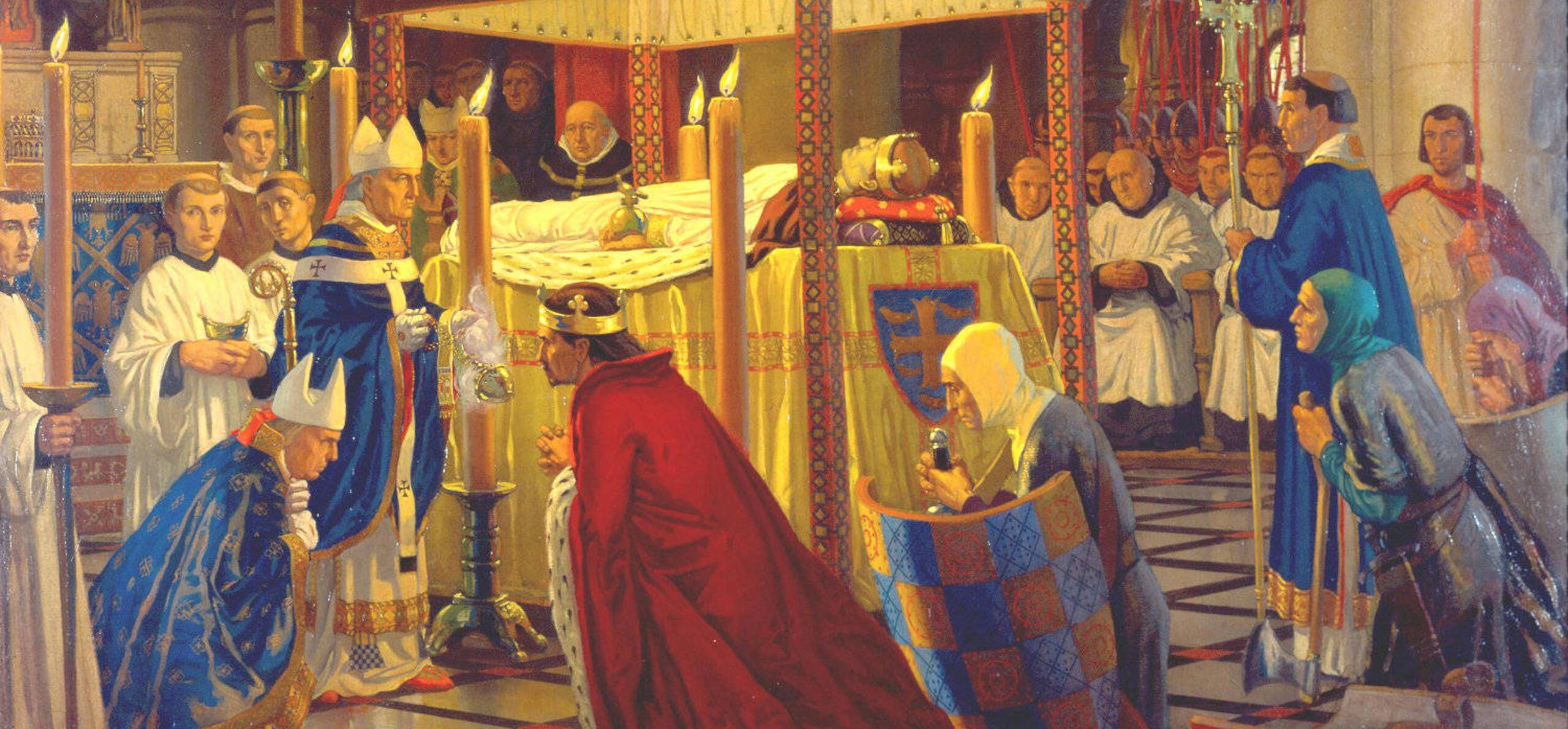King Henry I was buried in front of the High Altar at Reading Abbey on 3 January 1136. However, the story of his burial starts a month earlier on 2 December 1135 in Normandy.
Who was Henry I?
Henry had two older brothers, Robert and William. When their father, King William I (William the Conqueror, star of the Bayeux Tapestry) died, Henry’s older brother, Robert, inherited the title of Duke of Normandy, and William became King of England.
As the youngest brother, Henry grew up without major lands or political power, but took every opportunity to improve his position. He snatched the English crown as soon as William II died – killed in a hunting accident in the New Forest in 1100 – and fought Robert to become Duke of Normandy in 1106. Henry was hastily crowned king at Westminster Abbey on 5 August 1100, only three days after his brother’s death.

Henry and Reading Abbey
In 1121, King Henry I announced that he wanted a new abbey built at Reading. The abbey would have a large and impressive church, and living quarters for dozens of monks, who would worship in the church. The abbey would transform Reading forever, turning a market town into an important religious centre, known across Western Europe.
No expense was spared in building Henry’s abbey. The church and other buildings were designed to impress with their size, beauty and magnificence. The abbey church would be the fourth-longest church in England, after the cathedrals of Winchester and London, and the abbey church at Bury St Edmunds.
Henry I built this monastery between the rivers Kennet and Thames, in a spot calculated for the reception of almost all who might have occasion to travel to the more populous cities of England…
- William Malmesbury, 12th century chronicler
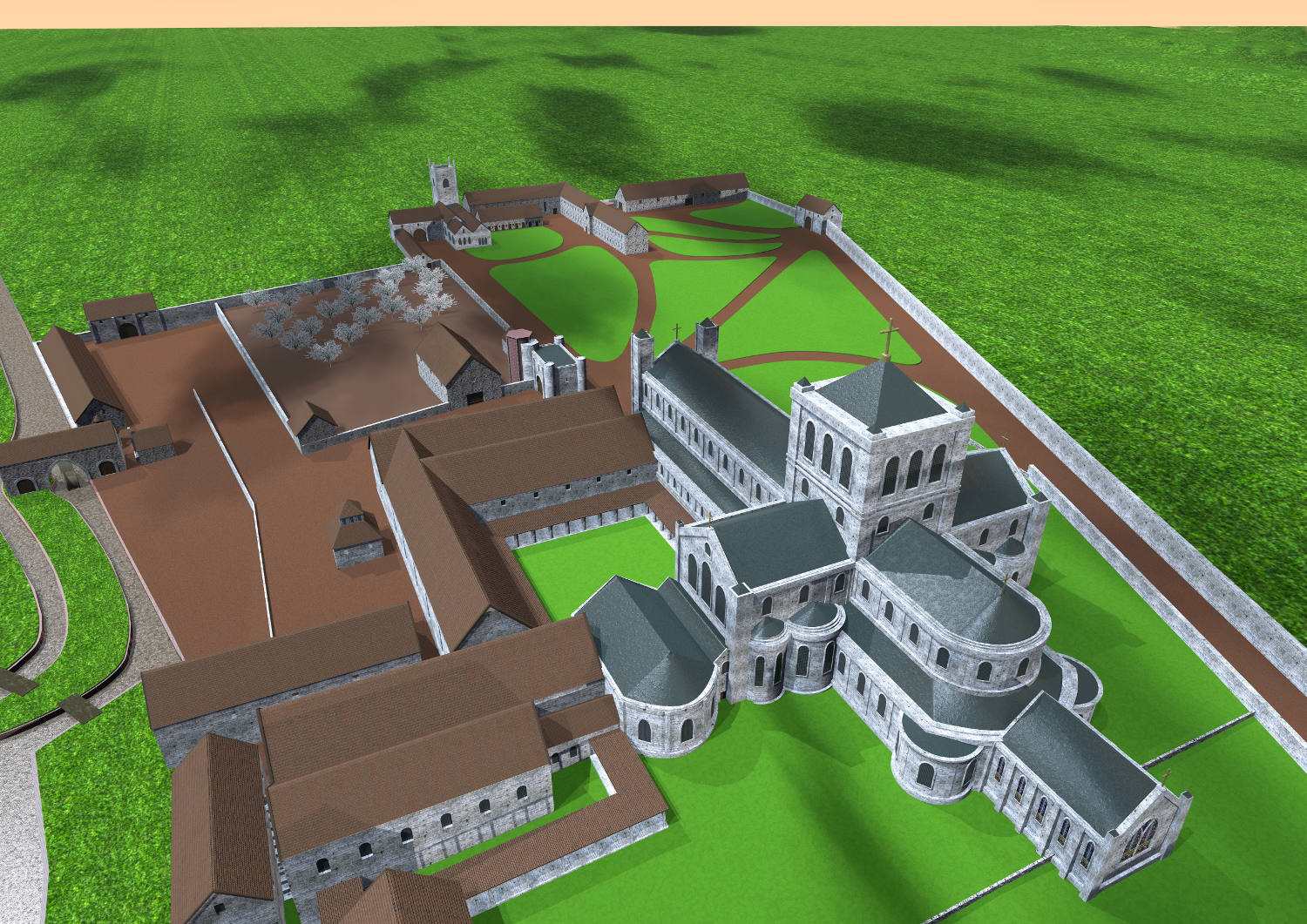
A modern reconstruction of the abbey precinct looking west over the cloister and impressive abbey church towards St Laurence's church
How did Henry die?
King Henry I died at Lyons-La-Foret, near Rouen in Normandy in December 1135 before the building of his royal abbey at Reading was completed. He had been intending to go hunting but fell ill in the night and never recovered.
According to the chronicler Henry of Huntingdon, Henry became unwell after eating 'a surfeit of lampreys' (a jawless fish).
On his deathbed, Henry gave instructions that his body should be taken to Reading, ‘where he had founded a monastery for 200 monks’. His closest retainers swore to stay with his body until it was taken to Reading for burial. These retainers included his illegitimate son, Robert de Caen, and the Archbishop of Rouen, accompanied by 20,000 men.
That very year the king died in Normandy the next day after the Feast of St. Andrew. Then this land immediately grew dark because every man who could immediately robbed another. Then his son and his friends took and brought his body to England, and buried it at Reading.
- The Anglo-Saxon Chronicles
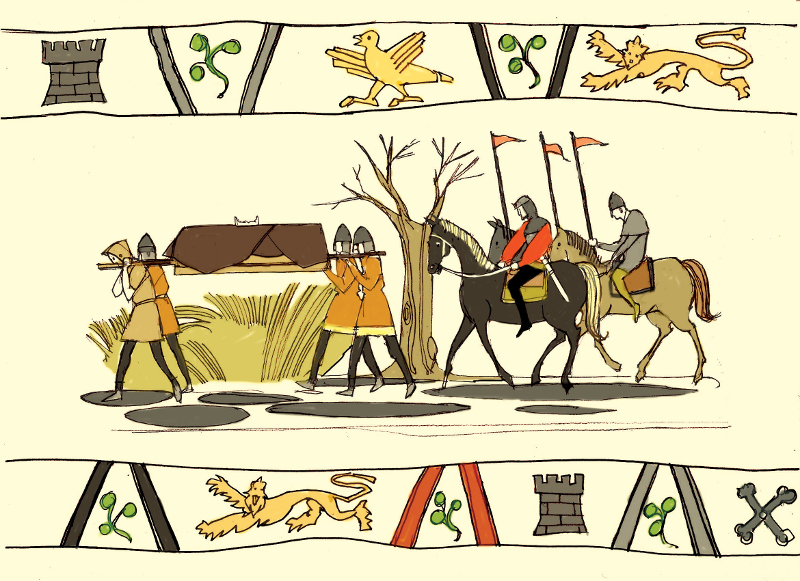
Henry I's body carried on bier along a wet and muddy road. Stephen and followers riding behind.
The Journey to England
Henry’s body was embalmed at Rouen Cathedral. His heart and intestines were removed and buried at the priory of Notre-Dame-du-Pre. The brain and eyes were also taken out. The corpse was already starting to smell. Scented balm was rubbed on Henry’s insides. His flesh was rubbed with salt to stop it from rotting and wrapped in ox hides. The man who removed Henry’s brain is said to have been killed by the 'strong, pervasive stench'.
The corpse’s journey to England was delayed for four weeks at Caen, by a strong winter gale preventing the ship from setting out for England. Despite the precautions to try and preserve Henry’s corpse black fluid started to leak from the ox hides. Finally at Christmas there was favourable wind and the ship set sail accompanied by an escort of monks from Saint-Etienne.
Henry’s nephew Stephen, had been crowned as king on 22 December, despite the rival claim of Henry’s daughter, Empress Matilda. Stephen met the ship when it finally landed in England. He and his nobles carried the bier on their shoulders on its arrival. The body was then carried to Reading Abbey.
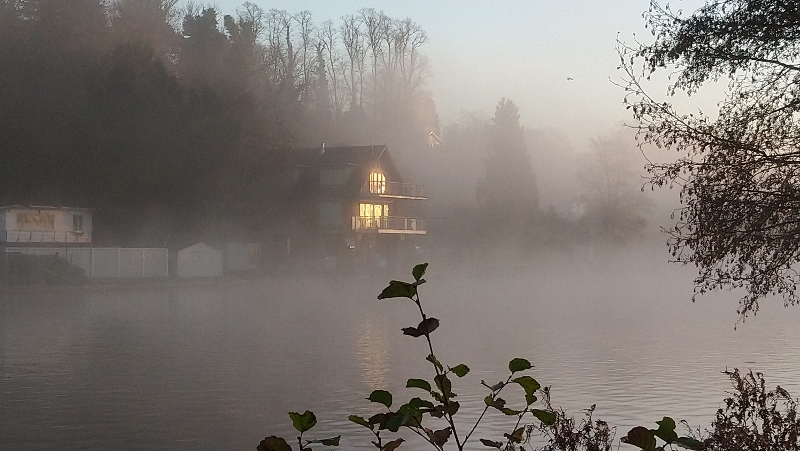
Henry's body travelled by sea, road and river to Reading
Burial at Reading Abbey
Henry was finally buried at Reading Abbey on 3 January, 1136.
The Archbishop of Canterbury, William of Corbeil, Henry of Blois, Bishop of Winchester, Bishop Roger of Sailsbury and of course Edward Abbot of Reading, were present at the burial, where masses were sung, rich offerings made and alms were distributed to the poor of Reading. The dead king’s effigy was displayed on a hearse, and his body was buried in a tomb before the abbey church’s High Altar, while Stephen sat enthroned watching the rituals. The abbey church and the ground immediately outside became a desirable location for other royals and nobles to be buried.
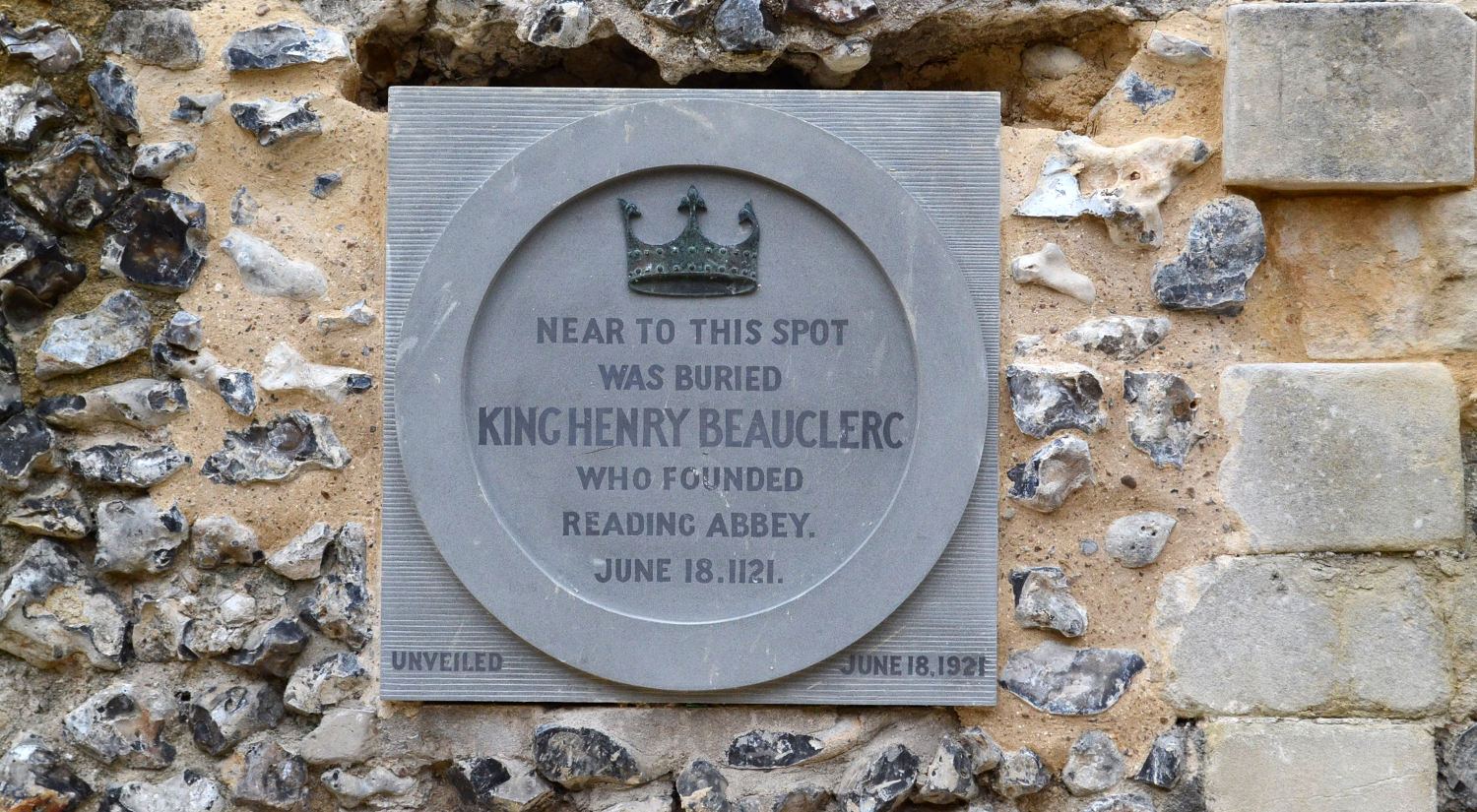
The plaque commemorating Henry's burial in the Abbey Ruins was restored in 2018
What can you see today - a king in a car park?
Henry’s tomb did not survive the destruction of the abbey after the Dissolution in 1539. By 1550s the abbey church was derelict and tombs were vandalised. Today the area of the High Altar and Henry's tomb are now occupied by the buildings of the old St James's school and the car park of the former prison. In the south transept of the Abbey Ruins you can see a plaque commemorating Henry's burial (pictured above). This stone plaque was first unveiled in 1921 and renewed in 2018 as part of the comprehensive conservation of the Abbey Ruins by Reading Council.
Find out more about visiting the Abbey Ruins on Reading's Abbey Quarter website.
Further Reading
Ron Baxter, 2016, The Royal Abbey of Reading, The Boydell Press
